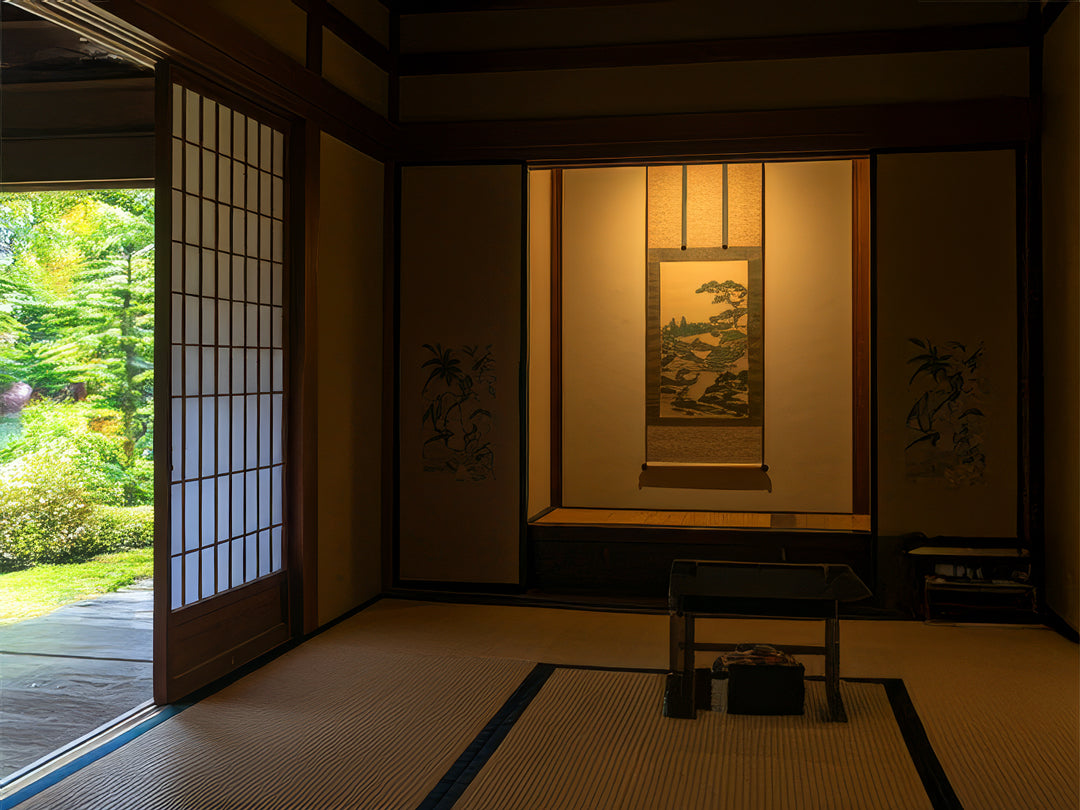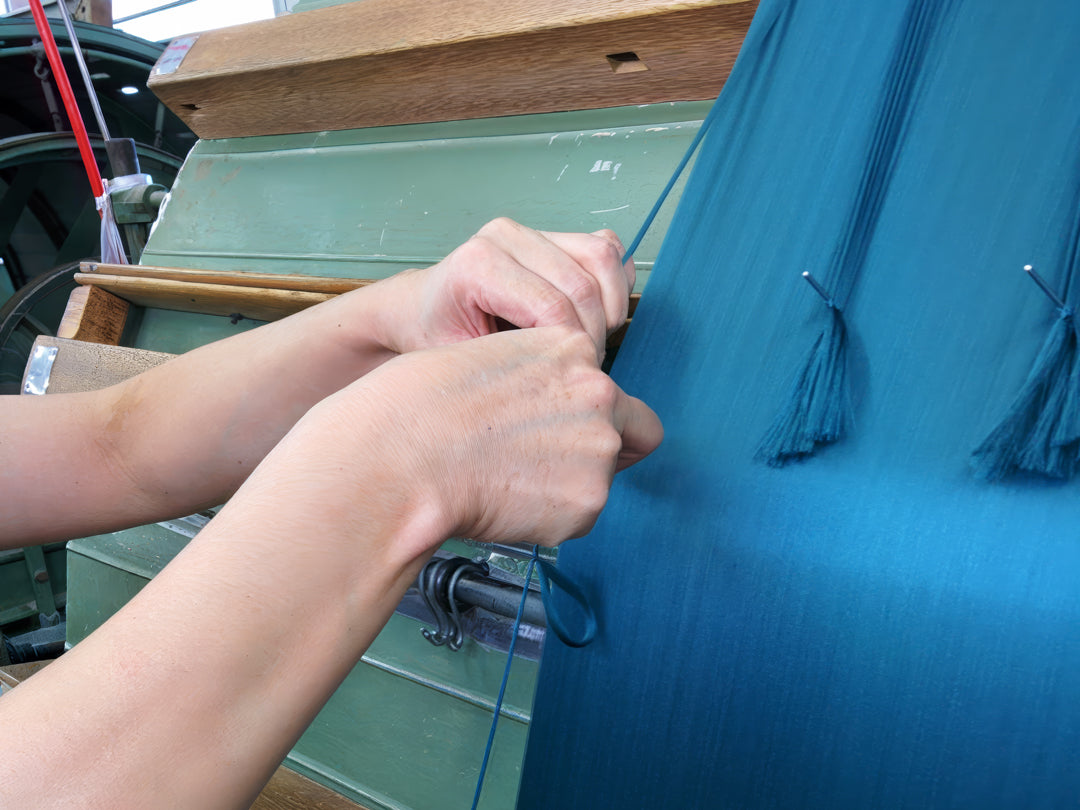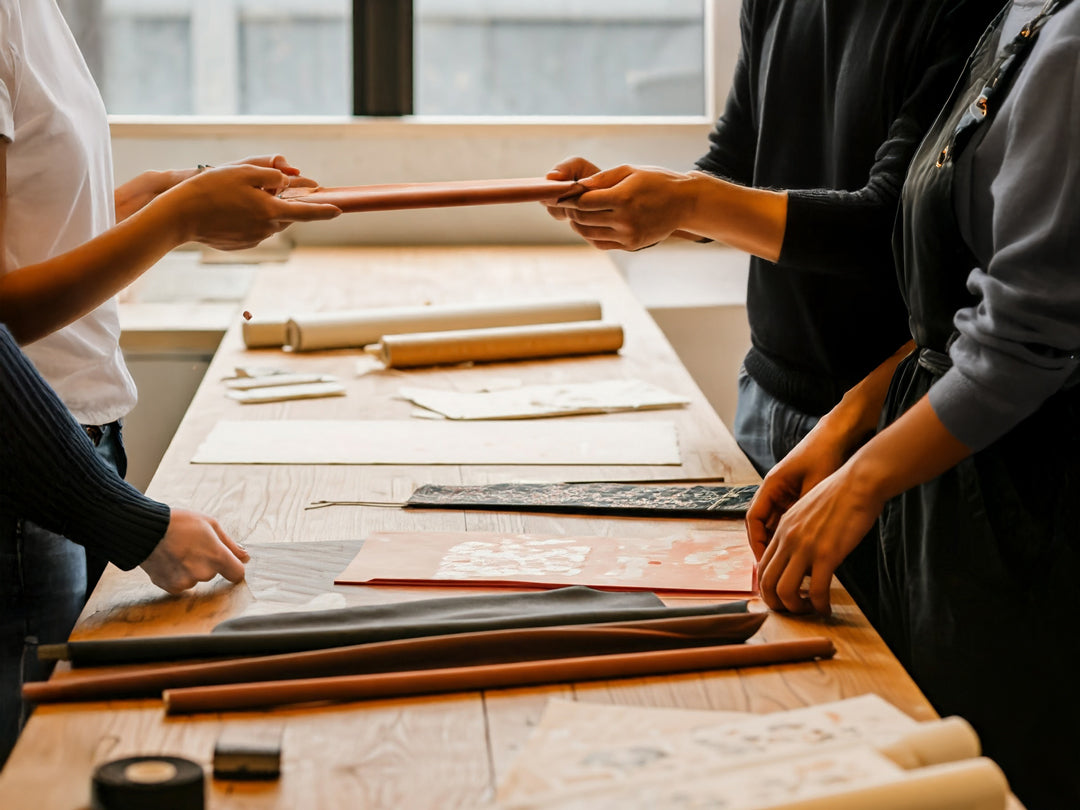About Scrothing Picture – Japanese Hanging Scrolls Thriving in the Modern Age
About Scrothing Picture
concept

Scrothing Picture is a coined word combining scroll (scroll), clothing (fabric/kimono), and picture (painting/photograph) and is pronounced "scrothing picture."
We want to fuse traditional beauty with modern sensibility, pursue new possibilities for hanging scroll culture, and create opportunities and a culture where anyone can enjoy hanging scrolls casually. Through Scrothing Picture, we hope to make hanging scrolls familiar to everyone and develop them into a culture that is loved by many people.
We hope that our original hanging scrolls will help you weave together your precious memories and stories, and that they will decorate your living room, study, and various other spaces with your precious memories and thoughts, and add color to your lifestyle.
*This project is being carried out with the cooperation and support of experts in various fields, including Masumi Tokyo Co., Ltd., a professional mounting company, kimono dressers, and professional hair and makeup artists.
What is a Kakejiku?

History of hanging scrolls
A kakejiku, or hanging scroll, is a piece of calligraphy or painting mounted onto a fabric called kireji (or kiru). It arrived in Japan from China around the Asuka period, alongside Buddhism, and was initially used to display Buddhist paintings and sutras.
The culture of kakejiku particularly flourished from the Kamakura to the Muromachi periods. With the establishment of the tokonoma, a unique Japanese alcove in traditional Japanese rooms, the style of mounting (hyogu) was developed to suit this decorative space.
During the Edo period, influenced by popular culture like ukiyo-e, kakejiku became widely familiar to common people. Many exquisite textiles were produced in famous weaving centers such as Nishijin. From the Meiji period onwards, kireji began to be specifically woven as hyoso-gire, fabric for mounting.
Even as it was influenced by Western art, Japanese painting established its own distinct identity. The custom of changing kakejiku according to the tea ceremony season also developed, rooting hanging scrolls deeply in Japanese life.
However, as residential styles became more Westernized through the Meiji, Taisho, Showa, and Heisei eras, homes with tokonoma decreased, leading to a decline in the use of kakejiku.

Current situation
The value of kakejiku, or Japanese hanging scrolls, as a representative art form of Japanese traditional culture, is currently being re-evaluated. There's a strong movement exploring new possibilities, such as modern designs that fit contemporary lifestyles and works incorporating modern art.
However, at the same time, the aging of artisans involved in hyogu (mounting) and a lack of successors have become serious problems, leading to the loss of traditional techniques and knowledge. For instance, producing hyoso-gire (mounting fabric) requires numerous steps and advanced skills, from design planning to thread dyeing and weaving. Creating just one piece of fabric involves thousands, even tens of thousands, of threads, with many highly labor-intensive processes. Yet, the number of skilled artisans responsible for these processes is decreasing, making it difficult to stably supply high-quality fabrics. The number of hyoguya (mounting shops) in Kyoto, which can be considered the center of this craft, has reportedly halved compared to 10 years ago.
Additionally, due to the decrease in tokonoma (traditional alcoves) in Japanese homes, traditional kakejiku are often difficult to display due to their appearance and atmosphere, leading to a decline in the use of kakejiku itself.
We believe that kakejiku are not just art pieces but important cultural assets that convey Japanese history and culture. If this situation is left unaddressed, there is a risk that the diversity of Japanese traditional culture will be lost, and our cultural richness will be diminished.

from now
In order to overcome this critical situation, efforts are being made in various regions to train young artisans and preserve traditional crafts.
Also attracting attention are attempts to create new hanging scrolls that suit modern life while making use of traditional techniques.
Our project, "Scrothing Picture," uses AI technology to create personalized designs, and by providing kits for making beautiful, authentic cloth and traditional techniques, we hope to increase the opportunities for everyone to experience hanging scrolls by providing something that can be easily enjoyed and adapted to the lifestyles of modern people.
We will continue to conduct research and development every day, aiming to make hanging scrolls not just works of art, but personal items with which one can weave one's own story, and to have them take root in modern life.
-

-
Easy ordering at home
Custom-made course
Click here for custom-made courses
-

-
Experience making a hanging scroll in the studio
Production experience course
Book a production experience course





